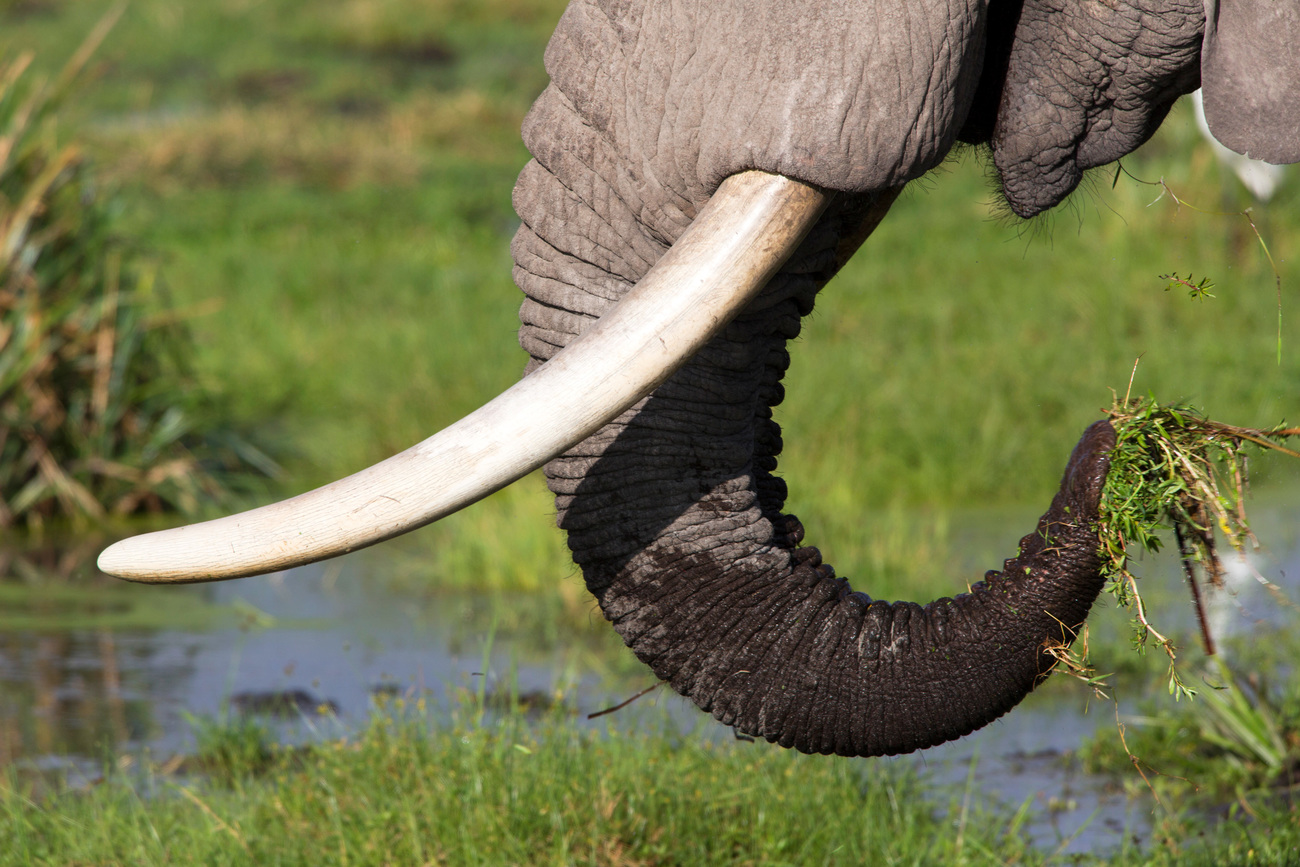Malawi Zambia Elephant Landscape Project
Most African elephant range areas transcend national borderswhy some creative poaching solutions fail
why some creative poaching solutions fail

Poaching is an epidemic. Seeing carcasses of giant, majestic animals like elephants and rhinoceroses slaughtered for their ivory and horn evokes anger and frustration.
Many people have written to our experts at the International Fund for Animal Welfare suggesting solutions like sedating animals and removing their horns or tusks, or dying elephant tusks or rhino horns pink to ruin or decrease its market value. While we appreciate the ideas and share in the desire for a simple answer, poaching is a complex issue, and most of the seemingly innovative or creative ideas simply will not work for various reasons.
Why can’t we dye elephant tusks or rhino horns pink?
Dying elephant tusks and rhino horns bright pink would make them worthless on the black market, but this tactic is not sustainable.
Dye grows out of tusks and horns
In addition to the risks associated with anesthetizing an animal as massive as an elephant or a rhino, horns and tusks grow back. Within three years, a rhino can regenerate its entire horn. Elephant’s tusks can grow as fast as an inch per year. The dye would grow out and re-dying each and every animal every few years is unrealistic.
Sedation distresses the animals
Capturing, sedating and dying the tusks of as many as 400,000 elephants is logistically impossible; the disruption and distress caused to these elephants could be detrimental to individuals and families; the number of elephants killed in the process would likely be sizeable; and the process would have to be repeated every few years or so.
Water source dyes are disruptive
Some have suggested that rather than sedate and dye, water sources are intentionally dyed with powder that when ingested would dye the animals’ tusks and horns. The logistical reality of funding and executing this effort would be impossible. Even if it was possible, there is no guarantee that pink ivory would not become the next popular commodity. In the wild, non-target species will also get affected from dyed water sources. From a touristic perspective this will reduce the photographic value of the animals.
Read Spencer’s story for a real-life example of a rhino who didn’t make it through the dying procedure.
Why don’t you poison rhino horns?
After purchase on the black market, rhino horns are often ground down and consumed for supposed medicinal properties. Poisoning a rhino’s horn would theoretically make it unappealing to the end user.
“Pure” rhino horn demand would increase
Aside from the moral and legal issue of intentionally poisoning people, it would likely drive up the demand for ‘pure’ rhino horn. Even if sanctuaries advertised the fact that they poisoned their rhinos’ horns, poachers are not concerned with the end user and would likely kill the animals anyway. The poacher only cares about a middleman who will pay them for their ill-gotten product and then turn around and sell their bounty to another middleman who also doesn’t care about the end user.
Logistical issues makes it nearly impossible to implement
Morality aside, there is a bevy of logistical issues as well. Because the horn is not connected to the blood stream, the poison would need to be injected directly into the animal’s horn which means the rhino would need to be sedated. Any time you sedate an animal of such a size, there are significant costs and health risks, including the risk of death. Reporting on which animals had been poisoned and where would prove impossible. Again, getting the poison infused into the horn will be almost impossible due to horn density. This has been tried in South Africa with no success.
The Rhino Resource Center published an article about chemical infusions, explaining more about the process and drawbacks.
Why not just safely dehorn and remove tusks from rhinos and elephants?
No horns and tusks? No need to poach.
Horn and tusk stumps are still valuable on the black market
Unfortunately it’s not that simple. Beyond the aforementioned risk of sedation and the ability to regenerate horns, removing ivory from these living animals does not mean they’ll be safe from poaching.
Field research shows that dehorning rhino by itself does not stop poachers from poaching de-horned rhino, as one cannot cut too close to the germinal layer, which could cause deformed re-growth, infection, and even death. Hence poachers are still willing to poach for that small stump of horn left.
Elephants tusk removal is also not possible as the tusk is part of the boney skull processes – hence the reason why poachers have to kill elephants to remove the tusks. To cut the tusks shorter would be a logistical task. However, although the stump is only 7-10% of the whole, this “small” bit of ivory still means big money on the black market.
Horns and tusks are important for rhino and elephant survival
Besides, elephants evolved tusks and rhinos evolved horns for good reasons. They need them to live fully functional, normal lives.
Rhinos use their horns to defend their territories, protect their calves from other rhinos and predators, in maternal care, and for foraging: digging for water and breaking branches.
Elephants use their tusks for defense against predators and other elephants, for lifting things, gathering food, and stripping bark from trees. In times of drought, tusks come in handy digging water holes in dry riverbeds.
How can I help end poaching?
Poaching is not one person harming one animal to fulfill one quota. Poaching is a team effort. To eradicate it, we need to break down these networks. The International Fund for Animal Welfare’s Team Lioness project is doing just that. Will you join us?
Related content
Our work can’t get done without you. Please give what you can to help animals thrive.